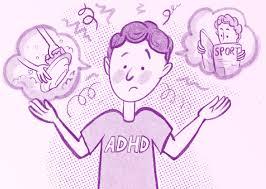Introduction
In 2025, Adderall—once a niche prescription for ADHD—has become a cultural phenomenon. Dubbed the “focus pill,” it's now a staple in the lives of students, professionals, and even athletes seeking an edge in an increasingly competitive world. But as its use surges, so do concerns about misuse, health risks, and the societal implications of a generation reliant on pharmaceutical enhancement.
This blog explores the rise of Adderall, its risks, and the reality of its impact on modern life.
The Rise of Adderall: From ADHD Treatment to Mainstream Use
A Surge in Prescriptions and Misuse
Adderall, a combination of amphetamine and dextroamphetamine, was originally approved for treating attention deficit hyperactivity disorder (ADHD) and narcolepsy. However, its off-label use as a cognitive enhancer has skyrocketed, especially among young adults and professionals.
- Prescription Trends: Between 2006 and 2016, stimulant prescriptions surged by 250%, far outpacing the rise in ADHD diagnoses. By 2025, the trend continues, with a notable increase in adult prescriptions, especially for those aged 22–44, driven in part by the COVID-19 pandemic's impact on mental health and productivity demands.
- Misuse Among Students and Professionals: Studies show that about 2% of the general population misuses prescription stimulants like Adderall, with rates as high as 11% among college students. The drug is often obtained from friends or family, used to cram for exams, or to meet tight work deadlines .
Why Adderall?
Adderall's appeal lies in its ability to sharpen focus, delay fatigue, and enhance productivity. For students, it's a “study drug”; for professionals, it's a tool to outperform peers. The pressure to excel in hyper-competitive environments—from Ivy League campuses to Silicon Valley—has normalized its use, even among those without ADHD.
The Risks: What Happens When the 'Focus Pill' Backfires?
Physical and Mental Health Consequences
While Adderall is effective for ADHD when used as prescribed, misuse carries significant risks:
- Cardiovascular Risks: Adderall increases heart rate and blood pressure. Long-term or high-dose use can lead to heart attack, stroke, or arrhythmias, especially in those with preexisting conditions.
- Mental Health: Misuse is linked to anxiety, depression, psychosis, and aggressive behavior. Withdrawal can cause fatigue, depression, and sleep disturbances.
- Addiction and Dependence: Adderall's stimulant properties make it habit-forming. Users may develop tolerance, require higher doses for the same effect, and experience withdrawal symptoms when stopping.
- Cognitive Decline: Paradoxically, long-term misuse can impair cognition, memory, and emotional regulation, undermining the very benefits users seek.
Societal and Ethical Dilemmas
- Academic and Workplace Inequality: The use of Adderall as a performance enhancer raises ethical questions. Does it create an unfair advantage? Should it be regulated like doping in sports?
- Normalization of Pharmaceutical Dependence: The cultural shift toward relying on pills for productivity trivializing mental health risks and undermining natural coping strategies.
The Reality: Who's Really Using Adderall in 2025?
Demographics and Trends
- Students: Up to 2.5% of 12th graders and 11% of college students reporting nonmedical Adderall use in the past year. The drug is often seen as a shortcut to academic success drugabusestatistics.org +2 .
- Young Professionals: In high-pressure industries like finance and tech, Adderall misuse is rampant. Some professionals snort crushed pills to extend their working hours, risking severe health consequences.
- Athletes: Adderall is used to counter fatigue and enhance performance, leading to suspensions in sports leagues.
The Role of Telemedicine and Accessibility
The rise of telemedicine has made it easier to obtain Adderall prescriptions, sometimes with minimal oversight. While this improves access for legitimate ADHD patients, it also facilitates misuse. The DEA has proposed new regulations to balance access with prevention, but enforcement remains a challenge.
Alternatives to Adderall: Safer Paths to Focus and Productivity
Prescription Alternatives
- Non-Stimulant ADHD Medications: Drugs like atomoxetine (Strattera) and guanfacine (Intuniv) offer alternatives with lower abuse potential.
- Modafinil: Used for narcolepsy, modafinil is sometimes prescribed off-label for ADHD. It has a lower risk of addiction and fewer side effects than Adderall.
Natural and Lifestyle-Based Alternatives
- Nootropics: Supplements like Vyvamind, Brain Pill, and natural options such as Ginkgo biloba, L-theanine, and omega-3 fatty acids are gaining popularity for cognitive enhancement without the risks of Adderall.
- Lifestyle Changes: Regular exercise, mindfulness, and a balanced diet can improve focus and mental clarity. Behavioral therapies, such as cognitive-behavioral therapy (CBT), are also effective for managing ADHD symptoms.
Conclusion: Navigating the Adderall Era
Adderall's rise reflects broader societal trends: the pursuit of productivity at any cost, the blurring line between treatment and enhancement, and the growing reliance on pharmaceuticals to meet life's demands. While it offers real benefits for those with ADHD, its misuse poses serious risks to health, equity, and well-being.
As we move forward, it's crucial to foster environments that prioritize sustainable productivity and mental health. Whether through safer alternatives, stricter regulations, or cultural shifts, the goal should be to empower individuals to thrive without compromising their health or integrity.
What do you think? Is buying Adderall online a necessary convenience in today's world, or a dangerous shortcut? Share your thoughts and experiences in the comments below.



